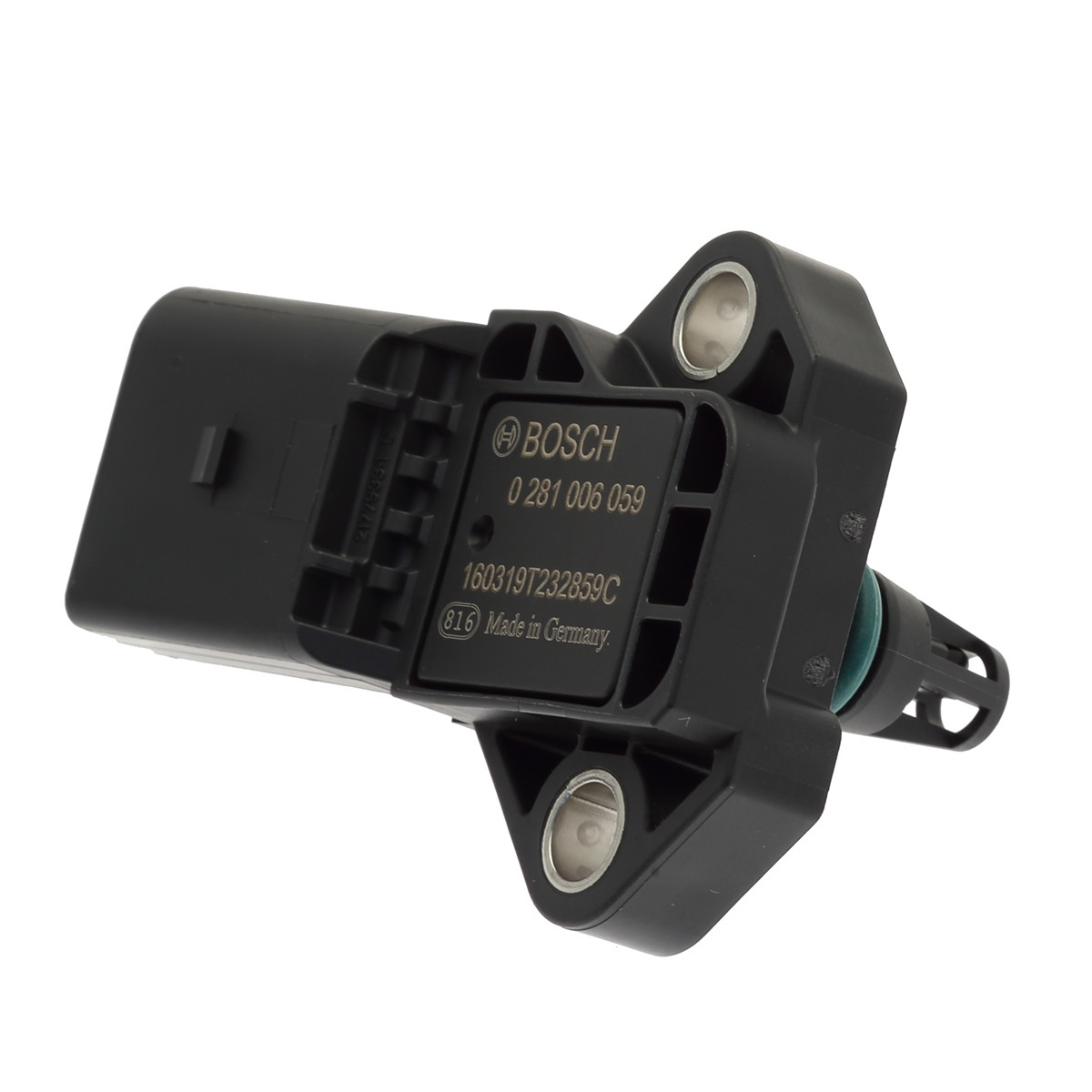Net price: 29 €
Net price: 29 €

MAP sensors are essential for optimal engine performance, especially in turbocharged systems. Bosch and Skunk2 sensors from LLRacing.hu accurately measure pressure, boosting performance and ensuring reliability. Tune smart—choose the right MAP sensor!
Introduction
In the world of modern car tuning, optimizing engine control and performance is essential. A key element of this process is the MAP (Manifold Absolute Pressure) sensor. The MAP sensor measures the pressure in the intake manifold, which is absolute pressure. This means that, in addition to the pressure in the intake manifold, it also accounts for atmospheric pressure, and transmits the data to the ECU (Engine Control Unit), which optimizes the air-fuel mixture, particularly in turbocharged engines.

MAP Sensor Basics
The MAP sensor primarily measures the pressure in the intake manifold, but since it measures absolute pressure, it considers both the internal pressure of the intake manifold and the atmospheric pressure. This is especially important for turbocharged engines, where internal pressure can significantly increase. Factory sensors are usually designed to handle up to 1 BAR of pressure, which is sufficient for a naturally aspirated engine. The 1 BAR here refers to absolute pressure, which includes atmospheric pressure. However, with the use of a turbocharger, the increased pressure requires higher-capacity sensors, such as 2, 3, or 4 BAR versions, which can handle higher absolute pressures.
MAP Sensors Suitable for Tuning
When tuning, it is often necessary to replace the factory sensors, as they cannot handle the higher pressure levels generated by turbocharged engines. The LLRacing.hu webshop offers a variety of high-quality MAP sensors specifically developed for tuning purposes, capable of accurately measuring higher absolute pressures.
LLRacing's Offering
BOSCH C 3 BAR MAP Sensor:
This sensor can measure up to 2 BAR of boost pressure, which equates to 3 BAR absolute pressure. It's an ideal choice for those looking to boost the performance of their TDI engine. It provides more reliable and accurate data than factory sensors, optimizing engine performance in turbocharged conditions.
Skunk2 4 BAR MAP Sensor (Honda-Specific):
This sensor was specifically designed for Honda engines but is also excellent for tuned engines. With its 4 BAR capacity, it can measure up to 3 BAR of boost pressure (4 BAR absolute pressure), making it perfect for higher-performance turbocharged systems.
Absolute Pressure in Tuning
Measuring absolute pressure (the combined pressure of the intake manifold and atmospheric pressure) helps optimize fuel injection. This is particularly important during tuning, as turbocharging increases the pressure in the intake manifold, which the ECU must adjust for. Sensors like the Skunk2 4 BAR allow for the management of higher boost pressures, increasing engine performance without damaging it.
Why Choosing the Right MAP Sensor Matters
For tuned cars, selecting the right MAP sensor is essential for optimal engine performance. An incorrect sensor can send inaccurate data to the ECU, which not only reduces performance but could also damage the engine. The sensors offered by LLRacing.hu are reliable and meet the highest quality standards, ensuring optimal engine performance and longevity.
Closing Thoughts
If you're serious about tuning your car, remember that the MAP sensor is a small but vital component. Choosing the right sensor can make a significant difference in your engine’s performance and reliability. The sensors available at the LLRacing.hu webshop are among the best on the market, whether you're looking for Bosch or Skunk2 products. If you're serious about tuning, it's worth investing in these components.